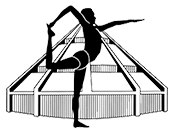 Sutra I.47 prayatna saithilya ananta sampattibhyam
Sutra I.47 prayatna saithilya ananta sampattibhyam
Perfection in an asana is achieved when the effort to perform it becomes effortless and the infinite being within is reached. B.K.S. Iyengar, Light on the Yoga Sutras p 159
Earlier in the fall our classes looked at the second sutra, defining yoga as quieting the fluctuating consciousness, and then sutra I.46, that asana is perfect firmness, steadiness and stability. We talked about how much emphasis modern yoga classes put on asanas, the seemingly physical act of moving the body into strange shapes, holding those shapes and learning minute adjustments and how that relates to the definition of yoga and how impossible it usually felt to find that perfect stability. Most students had experienced the connection between working this way and mental and psychological changes that doing so creates. Everyone could think of at least a time or two they felt a quiet calmness durning savasana that was not a sleep state. Some could think of times they experienced this during asanas themselves.
This next sutra speaks to that experience directly. And to why this very precise method of learning and practicing the asanas works. In directing the mind precisely to direct the body precisely both get balanced and focused. When balance comes there is stillness. Here is what Mr Iyengar says:
“The sadhaka (practitioner or seeker) can be considered firm in his postures when persevering effort is no longer needed. In this stability, he grasps the physiology of each asana and penetrates within, reaching the minutest parts of the body. Then he gains the art of relaxation, maintaining the firmness and extension of the body and consciousness. In this way he develops a sensitive mind. With this sensitivity, he trains his thinking faculty to read, study and penetrate the infinite. He is immersed in the boundless state of oneness which is indivisible and universal. ….. When the sadhakha has reached that state of balance; attention, extension, diffusion and relaxation take place simultaneously in body and intelligence, and they merge in the seat of the soul. This is a sign of release form the dualities of pleasure and pain, contraction and extension, heat and cold, honour and dishonour, etc. Perfection in asana brings unalloyed happiness, blessedness and beatitude.”
Everyone could think of something they struggled with when they began their yoga that has gotten easier. For instance holding their arms out to the side. But as they have progressed as practitioners the effort to do that feels less, even though in actuality the arms haven’t gotten any lighter. Holding poses like Sirsasana (head stand) for longer periods of time has gotten easier because students have learned how to balance their energies, finding the stability so that the effort required gets withdrawn and the mind gets quiet. Anyone who has tried any of the balancing poses knows that as soon as the mind gets ‘jiggled’ the pose becomes unstable. We can balance on one leg in Vrksasana (tree pose) until we realize we are doing it and the mind gets disturbed and then the balance goes off. You can learn to hold downward dog pose for longer and longer periods of time as you learn to adjust the muscles of the shoulders so they come into balance and the joint functions smoothly, as the hamstrings and quadriceps balance each other in their ability to hold you up so that overall it becomes an effortless pose. When places like shoulders and hamstrings quit calling attention to the mind saying they are struggling, the mind is able to focus on the body as a whole and becomes quiet. Instead of banging around from place to place within the body and wishing for release it stays steady and calm.

Leave a Reply